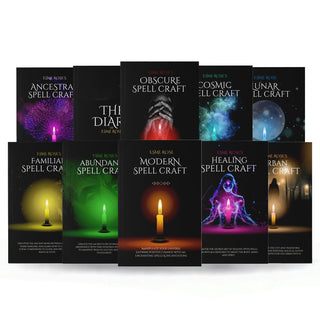Eostre: The Radiant Goddess of Spring and Dawn
As the world awakens from winter's slumber, we find ourselves on the cusp of spring, a time of renewal, rebirth, and vibrant energy. At the heart of this seasonal transition lies an ancient figure: Eostre, the goddess of spring and dawn. Join us as we unravel the mysteries surrounding this captivating deity and explore her enduring influence on our modern world.
The Origins of Eostre: Unveiling the Goddess
Eostre, also known as Ostara in some traditions, is a goddess whose roots trace back to ancient Germanic paganism. Her name is believed to be the origin of the word "Easter" and is closely tied to the direction "east," where the sun rises.
Historical References
Our primary historical source for Eostre comes from the Venerable Bede, an 8th-century English monk. In his work "De temporum ratione" (The Reckoning of Time), Bede mentions Eostre as the namesake of the Anglo-Saxon month "Eosturmonath," corresponding to April. He writes:
"Eosturmonath has a name which is now translated 'Paschal month,' and which was once called after a goddess of theirs named Eostre, in whose honour feasts were celebrated in that month."
While this is our main historical reference, the existence of Eostre is supported by linguistic evidence and parallels in other Indo-European mythologies.
Symbolism and Attributes
Eostre embodies the essence of spring and the dawn, symbolizing:
- Renewal and rebirth
- Fertility and abundance
- Light overcoming darkness
- The awakening of nature
She is often associated with hares and eggs, both potent symbols of fertility and new life.
Eostre and the Spring Equinox: A Celestial Dance
The worship of Eostre is intrinsically linked to the spring equinox, a time when day and night are of equal length, signaling the beginning of spring in the Northern Hemisphere.
The Significance of the Equinox
The spring equinox, occurring around March 20-21, marks a point of balance in the year. It represents:
- The triumph of light over darkness as days begin to lengthen
- A time of perfect equilibrium between opposing forces
- The awakening of the Earth from winter's sleep
- A period of fertility, both for the land and for ideas
Eostre's Festivities
Ancient celebrations honoring Eostre likely coincided with the equinox. These festivities may have included:
- Lighting bonfires to welcome the return of warmth and light
- Decorating with spring flowers and greenery
- Sharing feast foods associated with fertility, such as eggs
- Performing rituals to ensure a bountiful growing season
The Hare and the Egg: Eostre's Sacred Symbols
Two of the most enduring symbols associated with Eostre are the hare and the egg, both of which continue to play a significant role in modern Easter celebrations.
The Sacred Hare
The hare, known for its fertility and speed, is deeply connected to Eostre. Some legends suggest that Eostre could transform into a hare, while others tell of her companion animal. The hare's association with the goddess may have led to the tradition of the Easter Bunny.
The Cosmic Egg
Eggs, symbols of new life and potential, are central to Eostre's mythology. In many creation myths, the cosmos itself emerges from a cosmic egg. The practice of decorating eggs in spring may have roots in ancient offerings to Eostre.
Eostre's Legacy: From Ancient Goddess to Modern Celebration
While the direct worship of Eostre has faded with time, her influence persists in various forms:
Easter Traditions
Many Easter customs have roots in Eostre worship:
- The name "Easter" itself
- The Easter Bunny and egg hunts
- The tradition of wearing new clothes to welcome spring
- Spring cleaning as a ritual of renewal
Neopagan Practices
Modern pagans and Wiccans often celebrate Ostara, a festival named after Eostre, at the spring equinox. These celebrations might include:
- Rituals to welcome spring and honor the goddess
- Planting seeds, both literally and metaphorically
- Meditation on balance and new beginnings
- Creating altars with spring flowers and symbols of renewal
Embracing the Spirit of Eostre in Modern Times
Whether or not one believes in the historical worship of Eostre, her symbolism offers valuable insights for our lives today:
- Renewal: Use the energy of spring to refresh your goals and aspirations.
- Balance: Reflect on the equinox's message of equilibrium in your own life.
- Growth: Plant seeds of change, nurturing new ideas and projects.
- Appreciation: Take time to observe and celebrate the rebirth of nature around you.
The Eternal Return of Spring
Eostre, the radiant goddess of spring and dawn, reminds us of the cyclical nature of life and the promise of renewal that each spring brings. Whether we see her as a historical deity, a poetic personification of natural forces, or a symbol of rebirth, her essence continues to touch our lives.
As we welcome the spring equinox and feel the stirring of new life around us, let us embrace the spirit of Eostre. May we find balance, nurture growth, and celebrate the eternal dance of renewal that connects us to the rhythms of the natural world.










